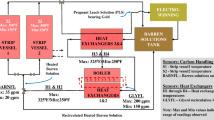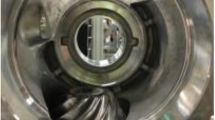Abstract
Sensors are everywhere in the mining industry, with sensor information being used to monitor and operate processes. Therefore, when sensor information is wrong, economic losses can occur. Unfortunately, sensor errors are usually not detected till they become large. This is problematic as most calibrate their sensors no more than once a year (Beamex, n.d.). Using principles of data mining, where all relevant information is tapped to glean hidden information, Pothina [8] designed an algorithm to detect errors in temperature sensors in gold stripping circuit in Pogo mine, Alaska. This paper continued his work by analyzing the behavior of the algorithm on baseline data and testing the algorithm in new data and under more rigorous conditions. It also made a change to the algorithm. The modified algorithm performed very well in the new data. It also worked well under the new error conditions. Three types of errors were seeded, a fixed additive error (+ 2%), a fixed subtractive error (− 2%), and a noisy, normally distributed error, with a mean value of + 2%. Artificially seeded errors were detected within about 20 gold stripping cycles. Inherent bias in operation impacted algorithm performance by increasing the number of cycles needed to detect errors. This paper reinforced Pothina’s [8] conclusion that when data mining approach is used, sensor errors can be detected even when they are pretty low. Significant economic losses can thus be minimized.








Similar content being viewed by others
References
Baljak V, Tei K, Honiden S (2012) Classification of faults in sensor readings with statistical pattern recognition. In: SENSORCOMM 2012: The Sixth International Conference on Sensor Technologies and Applications. pp 270–76
Beamex (n.d.) How Often Should Instruments Be Calibrated
Ge Q-b, Wen C-l (2006) The research of process monitoring based on data fusion theory. IFAC Proc 39(13):276–281. https://doi.org/10.3182/20060829-4-CN-2909.00045
Hou Z, Lian Z, Yao Y, Yuan X (2006) Data mining based sensor fault diagnosis and validation for building air conditioning system. Energy Convers Manag 47(15–16):2479–2490. https://doi.org/10.1016/J.ENCONMAN.2005.11.010
Institute of Electrical and Electronics Engineers (2017) IEEE P1451.6 Terms and Definitions. 2017. http://grouper.ieee.org/groups/1451/6/TermsDefinitions.htm
Mutzabaugh B (2018) Boeing, FAA update airlines on 737 max sensor issue. USA Today. November 7, 2018. https://www.usatoday.com/story/travel/flights/2018/11/07/boeing-737-max-faa-sensor-safety-updates/1918205002/%0A
Oh W (2015) A simple sensor fault detection algorithm. In: Int’l Conference on Computer Science, Data Mining & Mechanical Engg
Pothina R, Rajive G (2020) Detection of Subtle Sensor Errors in Mineral Processing Circuits Using Data-Mining Techniques. Mining, Metallurgy & Exploration. https://doi.org/10.1007/s42461-020-00176-y
Sharma AB, Govindan R, Golubchik L (2010) Sensor faults: detection methods and prevalence in real-world datasets. ACM Trans Sens Netw 6(3):1–34. https://doi.org/10.1145/1754414.1754419
Tipsuwanporn V, Leawsoong M, Numsomran A, Wongratanapornkul C (2013) Fault detection in compressor using FFT algorithm. In: Proceedings of the World Congress on Engineering and Computer Science 2013
Varsamou M, Antonakopoulos T (2009) A heuristic method for error correction in parallel probe-based storage devices. In: 6th International Multi-Conference on Systems, Signals and Devices
Wang, Hongm, Tian-You Chai, Jin-Liang Ding, and Martin Brown. 2009. “Data driven fault diagnosis and fault tolerant control: some advances and possible new directions.” Acta Automat Sin 35 (6): 739–747. https://doi.org/10.1016/S1874-1029(08)60093-2
Acknowledgments
The support of the University of Alaska Fairbanks, especially the Mining Engineering Research Endowment that provided a research assistantship to the first author, is gratefully acknowledged. Thanks are also due to Pogo mine for providing data.
Author information
Authors and Affiliations
Corresponding author
Ethics declarations
Conflict of Interest
The authors declare that they have no conflict of interest.
Additional information
Publisher’s Note
Springer Nature remains neutral with regard to jurisdictional claims in published maps and institutional affiliations.
Rights and permissions
About this article
Cite this article
de Melo, E.P., Ganguli, R. & Pothina, R. Modification and Enhanced Testing of Data Mining-Based Algorithm to Detect Subtle Errors in Temperature Sensors in Gold Stripping Circuit. Mining, Metallurgy & Exploration 37, 459–466 (2020). https://doi.org/10.1007/s42461-020-00184-y
Received:
Accepted:
Published:
Issue Date:
DOI: https://doi.org/10.1007/s42461-020-00184-y




